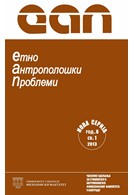Dobra smrt – o evoluciji društvenoprihvatljivog načina umiranja
A Good Death – On the Evolution of Social Acceptable Ways to Die
Author(s): Todor KuljićSubject(s): Anthropology, Sociology of Culture
Published by: Филозофски факултет, Универзитет у Београду
Keywords: good death; dying; ars moriendi; heroic death; revolution of death;
Summary/Abstract: Socially acceptable ways to die have been historically variable. The paper gives a historical overview of what was considered a good death in Europe. The difference between the traditional, the modern and the postmodern view of a good death is highlighted. The real conditions of dying on average have undergone fundamental changes, thus the image of a normal death has shifted as well. The conditions and meaning of living have imposed a vision of its desirable ending. Earlier, a good death was prepared and one would die in the presence of a priest, afterwards dying took place in hospitals, and today death is even more isolated. The death of private and public persons has changed as well, along with ways of mourning. In politics, a good death was always the one which was endowed with symbolic capital. Traditionally, in many cultures the heroic death has been reserved for those sacrificing themselves in war, while today heroic dying is more inclusive. The political utilization of death was always dependent on the hegemonic pattern of a good death in the given historical context. The utilization of the symbolic capital of death hasn’t stopped; rather, it was adopted in accordance with new social complexity, along with the image of the socially acceptable death.
Journal: Етноантрополошки проблеми
- Issue Year: 8/2013
- Issue No: 1
- Page Range: 61-73
- Page Count: 13
- Language: Serbian

